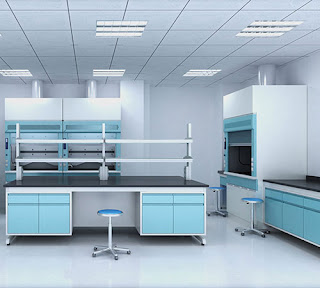Introduction:
When it comes to laboratory design, furniture plays a crucial role in creating a productive and safe working environment. From workbenches to storage cabinets, laboratory furniture should not only meet the specific needs of researchers but also promote efficiency, organization, and ergonomic comfort. In this blog, we will explore the key considerations involved in designing the perfect laboratory furniture.
Ergonomics: Prioritizing Comfort and Safety
Laboratory researchers often spend long hours conducting experiments and analyzing data. Therefore, ergonomic design is essential to prevent physical strain and promote productivity. Adjustable-height workbenches and chairs with proper lumbar support can help reduce the risk of musculoskeletal disorders and improve overall comfort. Consider incorporating features like footrests, wrist rests, and anti-fatigue mats to support the well-being of laboratory personnel.
Flexibility and Modular Design
Laboratories are dynamic environments, requiring adaptability to changing research needs. Modular furniture designs allow for easy reconfiguration and reorganization. Opt for modular workstations, shelving units, and storage cabinets that can be adjusted or expanded as required. This flexibility ensures efficient space utilization and the ability to accommodate evolving equipment and workflow requirements.
Material Selection: Durability and Chemical Resistance
Laboratory furniture must withstand frequent use, heavy equipment, and exposure to various chemicals. Choose materials that are durable, corrosion-resistant, and easy to clean. Stainless steel and chemical-resistant laminates are popular choices for work surfaces, while epoxy-coated steel or polypropylene can be used for storage cabinets. Investing in high-quality materials ensures longevity and reduces the risk of contamination or damage.
Storage Solutions: Organization and Accessibility
Efficient storage solutions are vital in a laboratory setting, where numerous tools, chemicals, and samples need to be readily accessible. Incorporate a mix of open shelves, closed cabinets, and drawers to accommodate different types of equipment and supplies. Consider labeling systems and color-coding techniques to enhance organization and promote safety. Additionally, safety cabinets with proper ventilation and locking mechanisms should be utilized for storing hazardous materials.
Integration of Services and Utilities
Laboratory furniture should be designed with the integration of services and utilities in mind. Electrical outlets, gas lines, plumbing, and data connections need to be strategically placed for easy access and to avoid clutter. Cable management systems can help keep wires organized and prevent hazards. Thoughtful planning and collaboration with relevant professionals, such as electricians and plumbers, are essential to ensure efficient utilization of resources.
Safety and Compliance
Maintaining a safe laboratory environment is of utmost importance. Ensure that the laboratory furniture complies with relevant safety standards and regulations. Incorporate features such as spill containment trays, chemical-resistant coatings, and fire-resistant materials where necessary. Adequate space should be provided for emergency exits and access to safety equipment like fire extinguishers and eyewash stations.
Conclusion:
Designing the perfect laboratory furniture Libya involves careful consideration of ergonomics, flexibility, durability, storage solutions, integration of services, and safety compliance. By prioritizing these factors, researchers can create a functional and efficient workspace that supports their work while ensuring the well-being of laboratory personnel. Investing in high-quality furniture not only enhances productivity but also contributes to the overall success of scientific endeavors.

Comments
Post a Comment